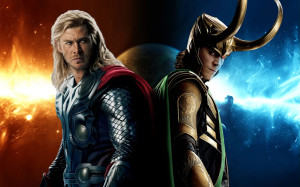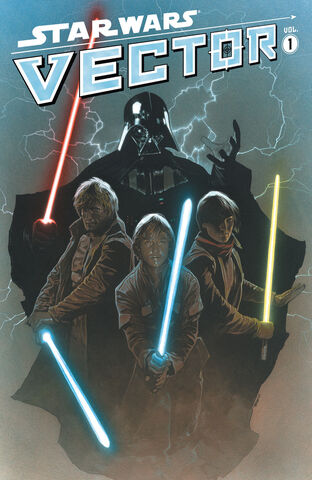
Thousands upon thousands of words have been written about the effect the TV series The Clone Wars had on Star Wars continuity—many of them, naturally, by your friendly Eleven-ThirtyEight staff. But one thing TCW missed out on that most people don’t talk about anymore was the one-of-a-kind opportunity Lucasfilm had the first time around—to tell one continuing story straight though from Attack of the Clones to Revenge of the Sith; and in real time, to boot. On August 20, coincidentally one day after yesterday’s Second Look pick, Ben Crofts published a look back at this awesome experience:
“What Lucasfilm (LFL) seemed to realize is that they had a unique opportunity here, to tell the stories of the Clone Wars, to greatly expand and show the full scale of this vast galactic conflict. A twin track strategy was deployed – Del Rey (DR) would do a series of books, each focusing on particular aspects of the conflict, while Dark Horse Comics (DHC) would spin their own ongoing tale.”
Ben’s retrospective not only served as a reminder of all the great Clone Wars stories that were told the first time around, but also showed us just what could be done with total cross-medium synergy—before then, as Ben points out, the best bridge stories always came out after the fact, once all the details were known. If there’s one area where SW films in the post-Lucas era really have a chance to break new ground, it just might be there. Ben’s full piece can be read here.
 I had a bit of a quandary this month. Eleven-ThirtyEight is only a couple weeks away from its six-month anniversary, and our writing staff has done such a great job of keeping up with our schedule and maintaining a great level of article quality that I decided they’d earned the week of Christmas off. I figured at the time that there wouldn’t be much harm in just letting the site sit still over the holidays, and resuming our usual publishing schedule on the 30th.
I had a bit of a quandary this month. Eleven-ThirtyEight is only a couple weeks away from its six-month anniversary, and our writing staff has done such a great job of keeping up with our schedule and maintaining a great level of article quality that I decided they’d earned the week of Christmas off. I figured at the time that there wouldn’t be much harm in just letting the site sit still over the holidays, and resuming our usual publishing schedule on the 30th. The first thing that I find important is to have the right casting. One of the main complaints from the Prequels is that some of the casting decisions were off and that hurt the movies. The casting for MCU has been really well done. They went out and found the right actors for the roles. Robert Downey Jr. is Tony Stark. His ability to fully embrace the character makes the movie more believable and enjoyable. Chris Hemsworth initially lured me in to the Thor movie but the chemistry between him and Tom Hiddleson is what keeps me coming back. I understand from the comics perspective that Hiddleson’s portrayal of Loki doesn’t always match up but I think it is easier to forgo that for fans because of how well the two actors fit together. Chris Evans’ ability to be a humble down home sexy is the perfect combination for what I want to see in a Captain America. Samuel L. Jackson as Nick Fury continues to show the brilliance of the casting decisions. MCU also had the guts to admit to a bad casting decision with the Hulk by recasting until they found the right fit for the series.
The first thing that I find important is to have the right casting. One of the main complaints from the Prequels is that some of the casting decisions were off and that hurt the movies. The casting for MCU has been really well done. They went out and found the right actors for the roles. Robert Downey Jr. is Tony Stark. His ability to fully embrace the character makes the movie more believable and enjoyable. Chris Hemsworth initially lured me in to the Thor movie but the chemistry between him and Tom Hiddleson is what keeps me coming back. I understand from the comics perspective that Hiddleson’s portrayal of Loki doesn’t always match up but I think it is easier to forgo that for fans because of how well the two actors fit together. Chris Evans’ ability to be a humble down home sexy is the perfect combination for what I want to see in a Captain America. Samuel L. Jackson as Nick Fury continues to show the brilliance of the casting decisions. MCU also had the guts to admit to a bad casting decision with the Hulk by recasting until they found the right fit for the series. n one side, John Ostrander and frequent collaborator, Jan Duursema; on the other, John Jackson Miller. These individuals have arguably been the heart and soul of the comics Expanded Universe for the last decade. When both Legacy and Knights of the Old Republic were running, it was a golden age for Star Wars (SW) comics. Dark Horse Comics’ (DHC) axing of both titles was their biggest and most spectacular own goal, though opting for miniseries a la the Mignolaverse isn’t far behind.
n one side, John Ostrander and frequent collaborator, Jan Duursema; on the other, John Jackson Miller. These individuals have arguably been the heart and soul of the comics Expanded Universe for the last decade. When both Legacy and Knights of the Old Republic were running, it was a golden age for Star Wars (SW) comics. Dark Horse Comics’ (DHC) axing of both titles was their biggest and most spectacular own goal, though opting for miniseries a la the Mignolaverse isn’t far behind.
